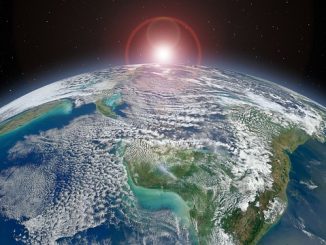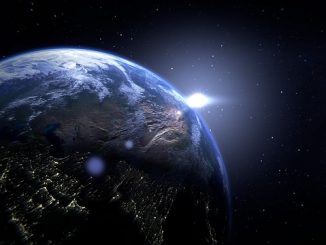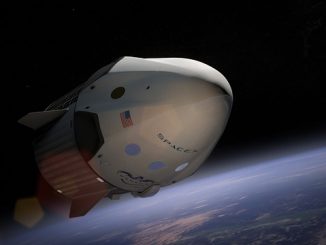
Researchers from the Harvard-Smithsonian Center for Astrophysics have discovered a planet that has easily risen to the top of the list for best spots where alien life might exist.
The exoplanet is called LHS1140b and is located in a solar system about 39 light years away. It is being dubbed as a ‘super-Earth’ because it’s bigger and more massive than our planet — it’s about 1.4 times its size and seven times its mass. LHS1140b is believed to be rocky and temperate, and is orbiting a red dwarf (a red dwarf is a star that has a mass that’s less than 60% of the Sun, which means it’s a relatively cool star.) It goes without saying that these features make this discovery a special and exciting find.
As explained to WIRED by David Charbonneau, professor of astronomy at Harvard University and one of the authors of the study, the fact that LHS1140b “orbits a nearby star which it passes in front of”, means we can study its atmosphere to search for signs of life (like the presence of oxygen). More specifically, as the planet passes in front of its host star, scientists can observe if it has an atmosphere and if it does, they can study what it consists of.
LHS1140b has a mass that’s comparable with our planet, a surface that’s possibly rocky because of its high density, and a temperature that’s neither too hot nor too cold because it’s orbiting its star at just the right distance for the possibility of liquid water to be present. In other words, it’s located right smack on a habitable zone.
All these make Super-Earth a prime candidate for hosting alien life. But there might be some negative factors against it too. Because red dwarfs are known to emit harmful radiation that can damage planets orbiting them, it’s possible that while LHS 1140b might have had liquid water within its lifetime, continuous bombardment of radiation from its host star might have stripped the planet of all that water. And for all we know, nothing might be left of its atmosphere.
On the other hand, there’s also a chance that the size and mass of the planet might have been enough to protect its atmosphere and liquid water. Plus, the amount of the radiation it receives might not be as high because based on observations using the European Southern Observatory’s telescope, the astronomers who first spotted the planet believe that compared with the Earth, it only receives about 50% of the amount of sunlight we receive from our Sun.
There are a lot more questions than answers at this time, of course. Which is why follow up observations using the world’s most powerful telescopes are being planned to find out just how much radiation the planet is actually being exposed to from its host star. This will hold the key to determining whether it is indeed habitable or not. And if it does turn out to be habitable, the bigger question will then be — is it actually habited?
It might take awhile before those questions can be answered. In the meantime, there’s no harm in letting our imagination run wild, right?
As lead author Dr. Jason Dittmann said in a report released by ESO: “This is the most exciting exoplanet I’ve seen in the past decade. We could hardly hope for a better target to perform one of the biggest quests in science – searching for evidence of life beyond Earth.”
Details of the study have recently been published in the journal Nature.




Leave a Reply